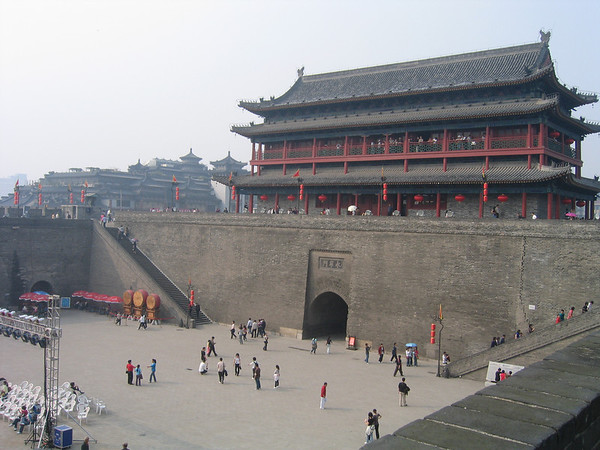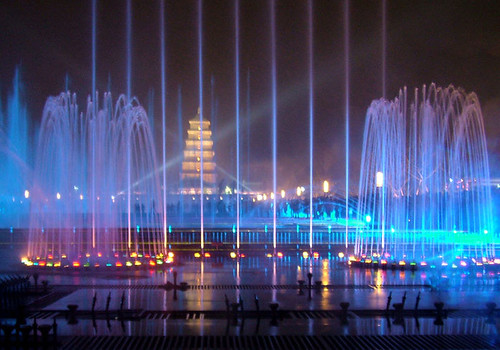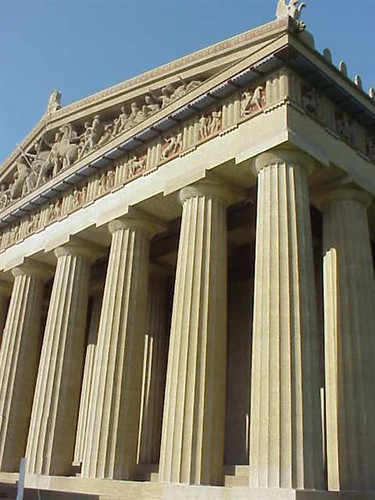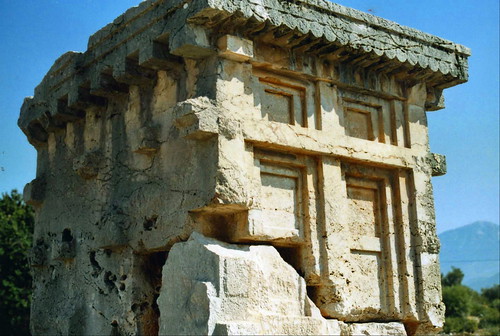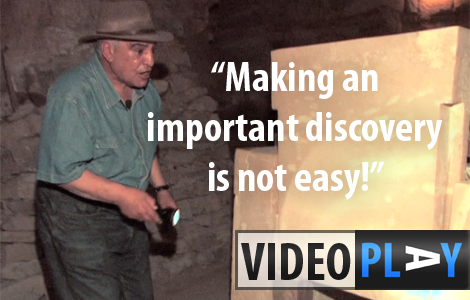The famous city walls surrounding the ancient Chinese capital of Xian could be in store for a major makeover. Last week, the city publicized a plan to invest about $1.75 billion to renovate the already well-preserved walls, which have stood for centuries. The plan is meant to better restore the walls and beautify the area. It will also feature the construction of four new museums at the walls main entrances. Each of the museums will center on four different dynasties that include the Zhou, Qin, Han and Tang. (Pictures of the proposed plan can be found here.) Wang Tian, a…
-
-
The Big Wild Goose Pagoda in Xi’an, China is a holy site for Buddhists, and a well preserved ancient relic. Built in 652 using a simple style of construction, the structure was created to hold Buddhist relics taken from India. It stands at 64.5 metres high, and its walls are engraved with fine statues of Buddha and calligraphy. China Roamer’s photograph shows a scene from the North Square – a 110,000 square metre waterscape and fountains plaza, the largest of its type inAsia. Composed completely of fountains, gardens, paths and sculptures, the area is perfectly portrayed in this night-time photograph.…
-
When he arrived in Britain in 122AD, Emperor Hadrian immediately saw a problem. The Roman Empire was already stretched thinner than a Jim Davidson joke, and spreading out into the monstrous back yard of the Picts and Brigantes, two of the island’s fiercest clans, was a hassle he couldn’t afford. So rather than waste energy fighting, Hadrian set about cordoning off Britannia with an 84 mile-long stone wall, manned by thousands of soldiers with its own towns and forts. But while Hadrian’s Wall ligatured Britannia’s frozen north, the southern capital of Londinium was also at risk of attack. And while…
-
As volcanic ash from Iceland’s volcano continues to cause chaos, there is news that access to Iran‘s ancient sites could soon become easier. From June to October this year, IranAir plans to operate a weekly non-stop flight from London Heathrow to Shiraz. The Saturday service will operate alongside the airlines existing three-day-a-week London-Tehran service, and see a return Shiraz-London flight offered every Sunday. Internal flights already operate from Tehran to Isafahan, Mashhad and Tabriz, as well as to Shiraz. The news comes at a time when Iraq is also opening up to tourists. When the ash clears, adventurous travellers will…
-
The cast and crew of Percy Jackson and the Olympians: The Lightning Thief didn’t have to go all the way to Athens to film the hydra scene in the Parthenon. They just booked some time in a reconstruction of the Parthenon in Nashville, Tennesse. Perhaps in the future, as the role of CGI increases in movies, they will be able to use a virtual version. I visited the Nashville Parthenon, as well as Second Life’s virtual reconstruction, to find out what the Parthenon of Athens was really like in the time of the ancient Greeks. The Nashville Parthenon I know,…
-
The south east of England has been at the centre of British history for two thousand years. There are hundreds of heritage sites within striking distance of London that can be easily visited in a day. Tracking out from the historic Roman heart of the city, here are some of my suggestions Within 2 Miles of the Centre Why not start where it all began? London wall was built by the Romans in around 200 AD. It lasted over 1,000 years and helped define the shape of the medieval city. One of the few remaining chunks of wall can be…
-
A large new church, monastic burials and a vaulted room filled with Coptic wall paintings – new excavation work at the Monastery of Saint Apollo at Bawit is yielding a wealth of remarkable finds. One of the team members, Dr. Ramez Boutros of the University of Toronto, discussed some of the finds at a recent lecture and Heritage Key followed up with an interview. The Monastery of Saint Apollo was founded by the saint around 385-390 AD. Its slightly north to the site of Asyut, which can be seen on the map below. Saint Apollo was a hermit of sorts…
-
Maybe its because Antony and Cleopatra did much of their romancing there, or perhaps its the azure sea, sandy beaches, traditional villages and lazy pace of life which make the Lycian coast in south west Turkey the ideal place for a romantic holiday – an experience that you can win in our Ancient World in London competition. But the history of the Lycian Way is peppered as much with war as it is with romance, and its tumultous history helps make Lycia a fascinating area of Turkey to visit. The mountainous, rugged territory behind the idyllic coastal scenery isolated Lycia…
-
Behind each great archaeological discovery there are at least two stories: who found it and how, and to whom it belonged. In case of the buried, or unfinished, step pyramid at Saqqara, both stories are fascinating. But one definitely does not come with a happy ending. Dr. Zahi Hawass tells us about the 1951 discovery of the Buried Pyramid at Saqqara by Egyptian archaeologist Zakari Goneim, and about how professional jealousy and false accusations eventually ended Goneim’s life as well as his career. In the 27th Century BC, Third Dynasty pharaoh Djoser was buried in the famous – and first…
-
A page on social networking site Facebook has been gathering and publishing historical photos of the city of Rome. Roma Sparita (‘Vanished Rome’) has so far clocked up more than 64,500 fans since January (it’s growing rapidly) and has more than 7,200 ‘vintage’ photos online. The site is becoming far more than its four administrators ever expected. Most of the photos show Rome throughout the 20th century (up until 1990) and there are plenty of iconic scenes of people in the 50s and 60s riding Vespas or in vintage Fiats. Some of the photos also date back as far as…

